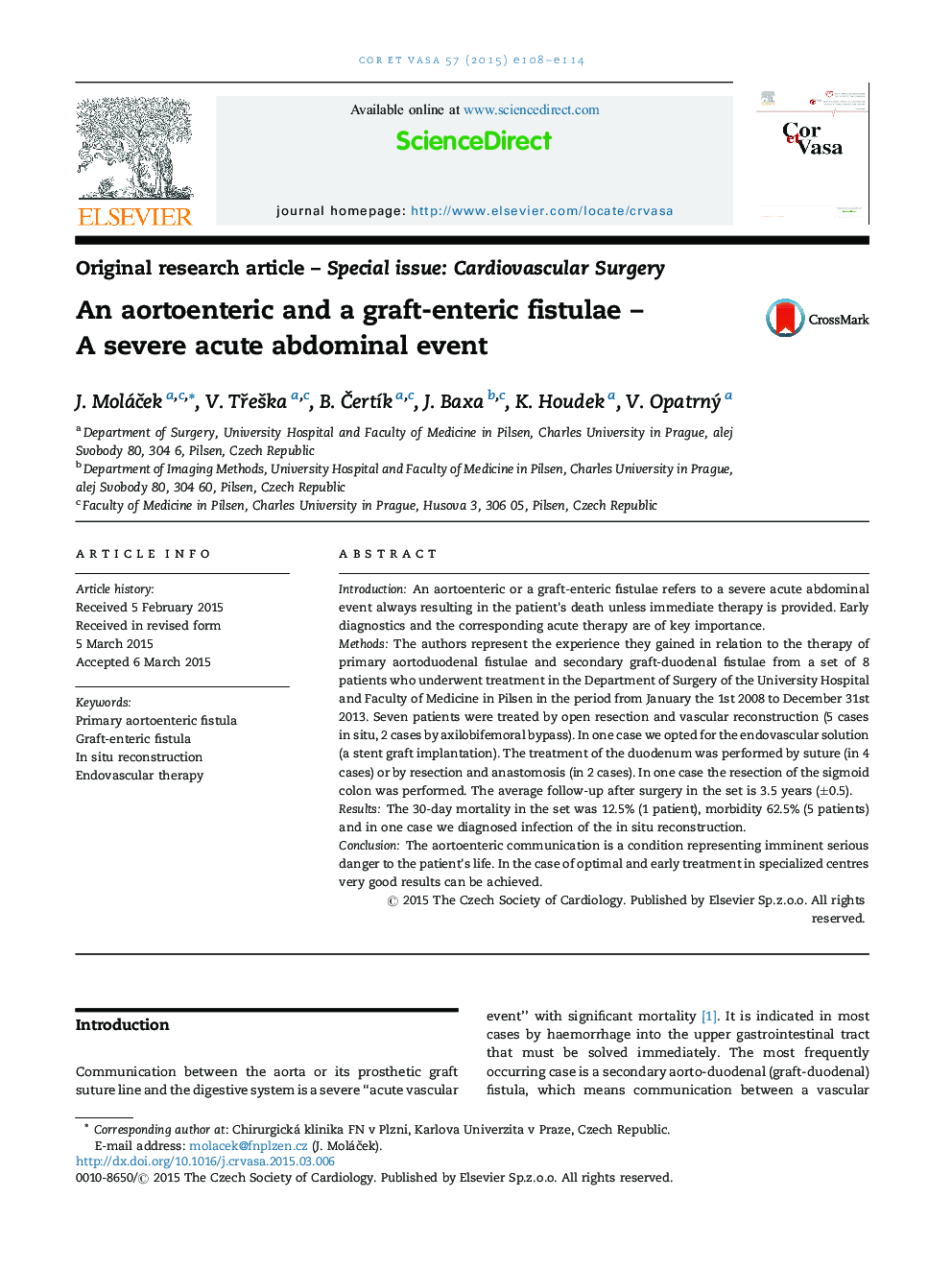| Article ID | Journal | Published Year | Pages | File Type |
|---|---|---|---|---|
| 2728396 | Cor et Vasa | 2015 | 7 Pages |
IntroductionAn aortoenteric or a graft-enteric fistulae refers to a severe acute abdominal event always resulting in the patient's death unless immediate therapy is provided. Early diagnostics and the corresponding acute therapy are of key importance.MethodsThe authors represent the experience they gained in relation to the therapy of primary aortoduodenal fistulae and secondary graft-duodenal fistulae from a set of 8 patients who underwent treatment in the Department of Surgery of the University Hospital and Faculty of Medicine in Pilsen in the period from January the 1st 2008 to December 31st 2013. Seven patients were treated by open resection and vascular reconstruction (5 cases in situ, 2 cases by axilobifemoral bypass). In one case we opted for the endovascular solution (a stent graft implantation). The treatment of the duodenum was performed by suture (in 4 cases) or by resection and anastomosis (in 2 cases). In one case the resection of the sigmoid colon was performed. The average follow-up after surgery in the set is 3.5 years (±0.5).ResultsThe 30-day mortality in the set was 12.5% (1 patient), morbidity 62.5% (5 patients) and in one case we diagnosed infection of the in situ reconstruction.ConclusionThe aortoenteric communication is a condition representing imminent serious danger to the patient's life. In the case of optimal and early treatment in specialized centres very good results can be achieved.
